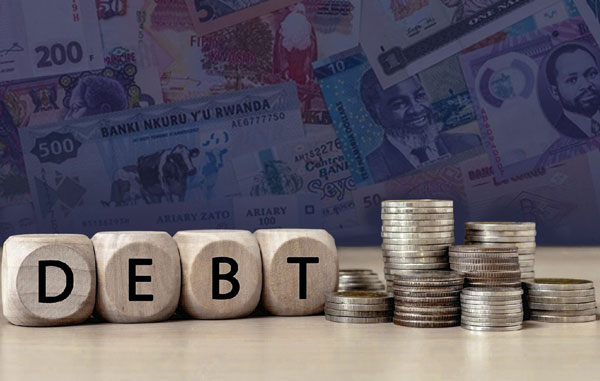
Kampala, Uganda | THE INDEPENDENT | Amidst global calls on governments to increase funding for climate activities, Uganda is torn between allocating more of her resources to the cause and keeping the national debt levels in check.
According to Uganda’s Nationally Determined Contributions as updated, in fulfilment of Article 4 of the Paris Agreement on Climate, the country set a carbon emission reduction target of 24.7 percent below the Business As Usual, by 2030.
This and other targets require at least 28.1 billion dollars (109 trillion shillings) between 2022 and 2030, with the country committing to mobilize domestic resources to cover the unconditional actions to the tune of 4.1 billion (16 trillion shillings) equivalent or 15 percent of the total cost.
Yet most of this money is supposed to be from debt, abetting the already worrying situation, according to SEATINI Uganda Executive Director, Jane Nalunga.
Uganda’s debt has for the last three years hovered around 50 percent of the GDP, according to the government figures, amidst warnings that should it rise further above that mark, it would be risky for the country.
In order to ensure the government continues offering its services, Nalunga says debt cannot be done away with, but that the situation needs balancing.
She adds that the global discussions under which the developed world promised to raise up to 100 billion dollars per year for climate mitigation activities in poor countries may not be relied upon as it is taking too long to materialize, hence the need for the country to increase funding from her domestic resources.
Dr Sam Mugume, the Assistant Commissioner, Macroeconomics Policy Department at the Ministry of Finance, Planning and Economic Development, says that the ministry is aware of the dilemma, but that they have to consider the costs.
Mugume says, for example, that if the resources are not invested in climate mitigation programs, the country risks bigger losses in terms of the economy and environmental degradation.
He gives the example of the 2016 drought that hit mainly the cattle corridor, costing the economy a growth of 50 percent, hence the need to balance the equation when budgeting.
However, Mugume says they try to balance by allocating resources in activities that have wider impacts like smart agriculture and solar irrigation among others, and in long-term projects.
He was speaking at a dialogue about “Leveraging Taxation as a sustainable tool for climate financing in Uganda: The Nexus Between Climate Change and Fiscal Policy’’, a collaboration between the Ministry of Finance and SEATINI Uganda.
The Permanent Secretary and Secretary to the Treasury, Ramathan Ggoobi, says the country would continue making adjustments in its tax policies as well as budgetary allocations to ensure that more activities are aligned to climate mitigation.
In a statement read for him by Dr Mugume, he says policies like carbon pricing and others, the 4.1 billion dollars that the government committed to raising will be realized as the government vows to reduce the impacts of climate change.
Eron Werikhe, the Senior Climate Finance Officer at the Ministry, who explained the risk that the country could face by underfunding climate mitigation programs, notes that the economy is largely dependent on agriculture, which in turn depends on rain.
This means that any negative changes in the weather usually has negative effects on the sector, and by extension, the economy.
Unfortunately, he says, most of the poorer and those slightly above the poverty line are reliant on agriculture for their livelihoods and that any shock may lead to a sharp rise in the poverty levels.
******
URN
 The Independent Uganda: You get the Truth we Pay the Price
The Independent Uganda: You get the Truth we Pay the Price


